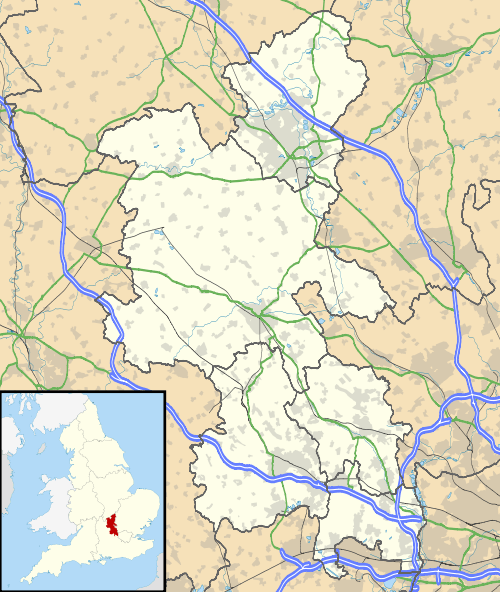Hughenden Valley
| Hughenden Valley | |
 The rear of Hughenden Manor |
|
 Hughenden Valley |
|
| Population | 8,506 [1] 8,362 (2011 Census)[2] |
|---|---|
| OS grid reference | SU866972 |
| Civil parish | Hughenden |
| District | Wycombe |
| Shire county | Buckinghamshire |
| Region | South East |
| Country | England |
| Sovereign state | United Kingdom |
| Post town | High Wycombe |
| Postcode district | HP14 /15 |
| Dialling code | 01494 |
| Police | Thames Valley |
| Fire | Buckinghamshire |
| Ambulance | South Central |
| EU Parliament | South East England |
| UK Parliament | Aylesbury |
|
|
Coordinates: 51°39′21″N 0°44′56″W / 51.6558°N 0.7490°W
Hughenden Valley (formerly called Hughenden or Hitchendon) is an extensive village and civil parish within Wycombe district in Buckinghamshire, England, just to the north of High Wycombe. It is almost 8,000 acres (32 km²) in size, divided mainly between arable and wooded land.
Hughenden parish was first mentioned in the Domesday Book of 1086 and was called Huchedene, or Hugh's Valley in modern English. There are some however that argue the original name refers to the Anglo Saxon man's name Huhha rather than the French Hugh. At the time of the Domesday Book, the village was in the extensive estates of Odo, Bishop of Bayeux, who was the half brother of William the Conqueror.
There were many ancient manors within the parish border, and in addition to Odo, King Henry I of England, King Henry VIII of England, and Simon de Montfort have all at one time owned property in the parish.
Benjamin Disraeli (later Earl of Beaconsfield) lived at Hughenden Manor, a Georgian mansion, altered by the Disraelis when they purchased it in 1848. The manor sits on the brow of the hill to the west of the main road that links Hughenden to High Wycombe. The Earl, who died in 1881 was buried in a vault beneath the nearby Church of St Michael and All Angels, accessed from the churchyard. The church also contains a memorial to the Earl erected by Queen Victoria: the only instance a reigning monarch has ever erected a memorial to a subject. The Manor House was given to the National Trust in 1947, and the trust also own woodland around here as well.
In the 18th century the parish church was one of few in the whole of England where marriages could take place without either the bride or groom residing in the parish. Hughenden became infamous locally as a place of clandestine marriages, and is referred to extensively as such in local records.
Sport and recreation
Hughenden has a King George's Field in memorial to King George V, and there is a village hall here too where groups such as karate, cubs, brownies, beavers, old people's groups, art club and toddler groups meet. Also in the village is the magnolia park sports club.It includes a bowls green three tennis courts a senior football pitch/cricket green and a club house.
Events
- Hughenden Village Day (every two or three years)
- Christmas Dinner Dance
- Burns Night at Hughenden Primary School
- Bonfire Night at Hughenden Primary School (though this has now stopped)
Amenities and businesses
- A pub called The Harrow at the north end of the village.
- Deeter Electronics Ltd, which produces specialist electronics, on the site of the former petrol station and BMW garage.
- A Builder's Yard near the south end of the village were there is also a car garage called hughenden autos
- A Doctors Surgery in a new building on the corner of the junction going to Great Kingshill.
- A Village Hall.
- A community-run shop adjacent to the Village Hall, which opened in May 2009.
- There used to be a Post office, but this has now closed and become a private house.
Schools
The village proper has one school – Hughenden Primary School[3] which recently moved from being just a first school, (years reception to 2), but is now taking years reception to year 6. Children can also go to Great Kingshill Combined School which is a Church of England school and so has links with the local church.
Hamlets
Hamlets in Hughenden parish include:
References
- ↑ Neighbourhood Statistics 2001 Census
- ↑ "Civil Parish population 2011". Neighbourhood Statistics. Office for National Statistics. Retrieved 19 November 2016.
- ↑ Hughenden Primary School website
External links
![]() Media related to Hughenden Valley at Wikimedia Commons
Media related to Hughenden Valley at Wikimedia Commons
